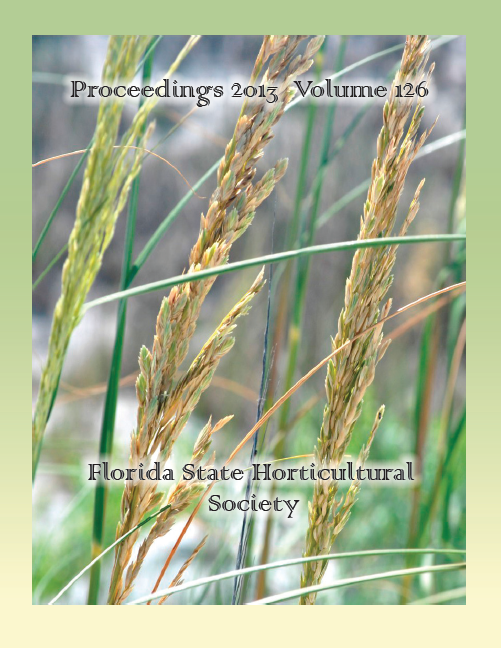Citrus and Subtropical Products Research Laboratory, Agricultural Research Service, U.S. Department of Agriculture, Ft. Pierce, FL 34945
Abstract
Canker is a devastating disease for the citrus fresh fruit market and is caused by the pathogenic bacterium Xanthomonas citri sub sp. citri (Xcc). Infection occurs by bacterial penetration through physical damage of leaves, peel, and stems, and also by bacterial entry through the stomates of these photosynthetic tissues. The chemical responses to Xcc infection and subsequent canker formation were characterized by high performance liquid chromatography (HPLC) coupled with mass spectrometry (MS) and fluorescence spectroscopy. Analyses of leaf cankers of ‘Marsh’ grapefruit (Citrus paradisi Macf.) and ‘Hamlin’ sweet orange (C. sinensis Linn.) showed stimulated production of the structurally related coumarins, umbelliferone, scopoletin, and scoparone. The production of other unidentified coumarins in citrus cankers was also documented. These compounds have been observed under other plant stress conditions in citrus, and it is surmised that these compounds occur as plant defense compounds in response to the resulting tissue damage following Xcc infection.

